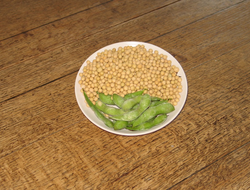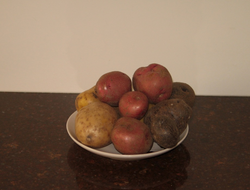GM foods: where do you stand in the debate?
Published: March 08, 2019
Since the beginning of the 1990s when genetically modified (GM) foods were introduced to the public, their nutrition, safety, sustainability, and economic value has been lengthily debated.
Beliefs and regulations regarding GM foods vary between countries with 420 million acres of agricultural land world-wide dedicated to GM crops, distributed in just under 30 countries.
In the US GM foods have been approved (GRAS: generally recognized as safe), but this is not the case in Europe.
While it may appear that GM foods are pervasive throughout the food supply voluntary consumption of GM foods is very limited.
GM foods that are grown on a small scale for direct consumption include Hawaiian papaya, some summer squash, peppers and potatoes.
Many of the GM foods that were developed, such as tomatoes bred for long shelf life, have been removed from the market due to cultural beliefs and negative perceptiosoybhttps://www.ahealthyphilosophy.com/article/soy-and-soy-products-dietary-staples-or-dietary-pariahsns of GM foods.
However, GM soy and corn hold significant positions in the North American agricultural industry and development of a variety of GM foods is ongoing.
On the one hand there is the promise of crops that do not require the use of pesticides, are resistant to drought and herbicides, or which offer improved nutrient value that has the potential to help combat malnutrition and disease.
On the other hand there is the question of safety, not only with respect to human health, but also the health of the environment which has yet to be established over the long term.
Pesticide producing plants include corn, broccoli and potatoes which contain a bacterium gene that produces a protein that is toxic to leaf chewing caterpillars, but not to humans.
A variety of potato has been developed that produces a beetle killing toxin in its leaves, and yellow squash that is resistant to several common viral plant diseases has also been developed.
Perhaps the most well-known GM crops are soybeans that are resistant to herbicides.
GM soybeans and corn have been developed to be resistant to glyphosate a component in commonly used herbicides.
However, it is this GM development that may highlight and provide support for the uncertainty around safety.
Glyphosate has been classified by the International Agency for Research on Cancer as a “probable human carcinogen” and another herbicide, 2,4-dichlorophenoxuacetatic acid as a “possible human carcinogen".
Although intended to simplify weed management the use of herbicides, particularly glyphosate, on GM crops has risen sharply in recent years.
This has led to the emergence of glyphosate resistant weeds and the need to use multiple herbicides such as 2,4-dichlorophenoxuacetic acid.
This increased use of herbicides gives rise to concerns about herbicide residues on food either for human or animal consumption and the effect on ecological systems.
A herbicide which contains both glyphosate and 2, 4-D has been approved for us in the US and a substantial increase in use is expected.
The question of safety is just one concern expressed in relation to GM foods, what else do you need to know if you are to make an informed decision about consuming GM foods?
Link to the full article to learn more.
References
1.
Kudhu, C & Davis, G. (2013). The Trials of Genetically Modified Food Food, Culture Society 16(1)
2.
Johnson, S (2014). Genetically modified food: a golden opportunity? Sustainable law and development policy
3.
Ling, HG. Santos, ME., Poletti, M (2013). Do women perceive genetically modified food differently than men? International Journal of Business, Marketing, and Decision Sciences 6, (1)
4.
Wholers, A. Labeling of genetically modi?ed food Closer to reality in the United States? Politics and the Life Sciences, 32(1):73-84.
5.
Landrigan, PJ. & Benbrook, C. (2015). GMOs, Herbicides, and Public Health, New England Journal of medicien 373;8
6.
Whitney, E. & Rady Rolfes, S. (2005). Understanding Nutrition. Belmont, CA: Thomson Wadsworth


